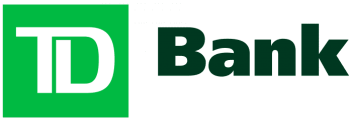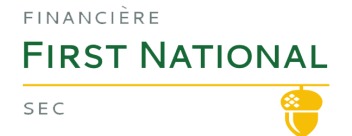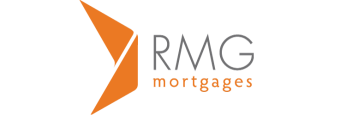Finding the best mortgage can be frustrating.
It doesn't have to be when you follow my 3 step plan.

Get started right away
The best place to start is to connect with me directly. My commitment is to listen to your needs,
assess your financial situation, provide professional mortgage advice, and
guide you through the mortgage process.

Get clarity
Sorting through all the different mortgage lenders, rates, terms, and features can be overwhelming.
Let me cut through the noise.
I'll outline the best mortgage products available with your needs in mind.

Proceed with confidence
My goal is to make sure you know exactly where you stand at all times. From your initial application through your mortgage renewal, I'm available to answer any questions and move you along with speed! I've got you covered.
Services
Whether you're a first-time buyer or an experienced homeowner, our brokerage offers access to some of the best products and rates on the market.
Renewals
Before renewing with your current lender, let a mortgage professional shop around for you. You'll be amazed at what they can do!
First Time Home Buyers
We help countless first-time buyers get their first mortgage. Our process makes it easy for you to achieve your goal of home ownership. Book a call with us today to learn how.
Competitive Rates
Our rates are consistently competitive, and we take pride in ensuring you receive the best possible rate available.
Referral
We can connect you with expert professionals you may need during the home buying process, including realtors, lawyers, and insurance brokers.
Refinance
Refinancing is a great way to access your home equity for consolidating debt, making home improvements, investing, covering college expenses, and more.
Nate Atkin
Mortgage Agent Level 2
Email: nate@hummingbirdmortgages.ca
License #M24001359
BRX Mortgages | FSRA No. 13463
Why Am I A
Mortgage Agent?
I am driven by a passion for helping you navigate life without financial stress. My goal is to work with you to ensure you have the cash flow and financial security you need during major life milestones. Whether you're buying your first home, helping pay for your kids' weddings or college tuition, taking your dream vacation, getting a new car, investing, or planning for retirement, I'm here to support you.
I bring over 20 years of proven experience in real estate and mortgage expertise. As the owner of Hummingbird Mortgages and a proud member of the BRX Brokerage Group, I have access to over 300 lending partners.
My focus is on providing you with expert advice and the best mortgage solutions tailored to your unique financial situation.
My mission is to represent you in obtaining the best products, rates, and services, all while offering a superior experience through quick response times, exceeding service expectations, and keeping your best interests at the forefront.
I'm here to assist with all your financing needs, including mortgages, renewals, refinancing, repositioning, HELOCs, private lending, bridge loans, commercial funding, first-time buyers, reverse mortgages, and more.
Additionally, I am a Principal Partner and Managing Agent for a US-based real estate investment group that offers clients the opportunity to invest in multifamily properties on a passive basis. We serve both accredited and non-accredited investors, providing a pathway to build wealth through large-scale multifamily assets. With expertise in acquiring and repositioning properties, my team focuses on generating passive income for investors and returning capital upon achieving our business objectives. (For more information, click on our "US Investing" link.)
I look forward to connecting with you!
Nate
I work with over 300 lenders, including some names you might recognize. Here are a few:
Everything you need,
all in one place
As a trusted mortgage provider, let me help you with these services.
Click through any of the services to learn more
Nice things people have said about working with me.
Thank you for helping me with my mortgage and making the process super easy and seamless.
I'll be sure to reach out in the future and recommend you.
Curtis P
I had a fantastic experience with Nate Atkin as my mortgage agent. Nate was incredibly knowledgeable and explained everything in a way that made the mortgage process easy to understand. Communication was key. Any questions when filling in forms, to questions of mortgage rates and investing advice were all met with quick replies and detailed info. The confidence from the answers, gave me confidence in the broker I picked.
The closing process was smooth. I had a quick close and Nate definitely worked overtime to meet my deadlines. Overall, I couldn't have asked for a better mortgage agent and would definitely recommend Nate and Hummingbird Mortgages to anyone looking for a stress-free experience.
Adam Nelson,
First Time Home Buyer
Nate is the best mortgage agent you could ever work with. Period. His knowledge of mortgages and the real estate market is unmatched. He made the entire process transparent, stress-free, and got my client a great rate, with exceptional communication throughout.
He’ll respond to your messages before you even send them. If you’re a realtor and you want the best for your clients, I strongly recommend you refer them to Nate Atkin and Hummingbird Mortgages.
Steve Lopresti,
Realtor
We had an outstanding experience with Nate Atkin as our Mortgage Agent. When we approached Nate to learn about a Reverse Mortgage, we couldn’t have made a better choice! Nate took the time to understand our needs and preferences, tailoring a perfect solution for us. His expertise in Reverse Mortgages and financial guidance was evident as he explained everything clearly, making the process easy to understand. Post close, Nate even advised us on how to maximize interest on our investments.
Nate's communication skills are exceptional, always prompt and clear. If you’re seeking the absolute best advice to get ahead, we highly recommend Nate Atkin. We've already shared his contact information with all our friends and family!
Douglas D – Reverse Mortgage and Debt Consolidation












